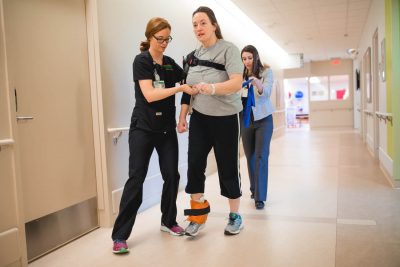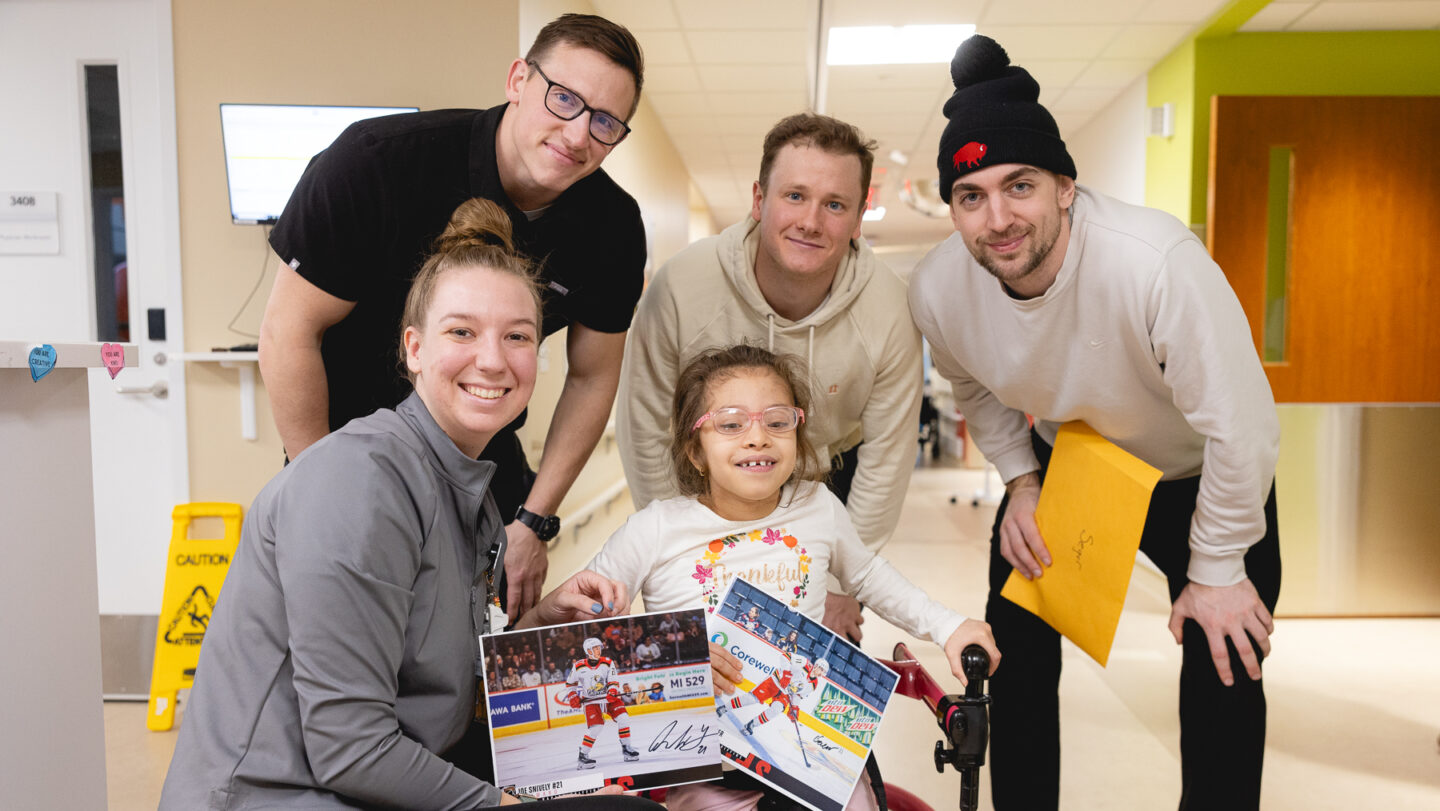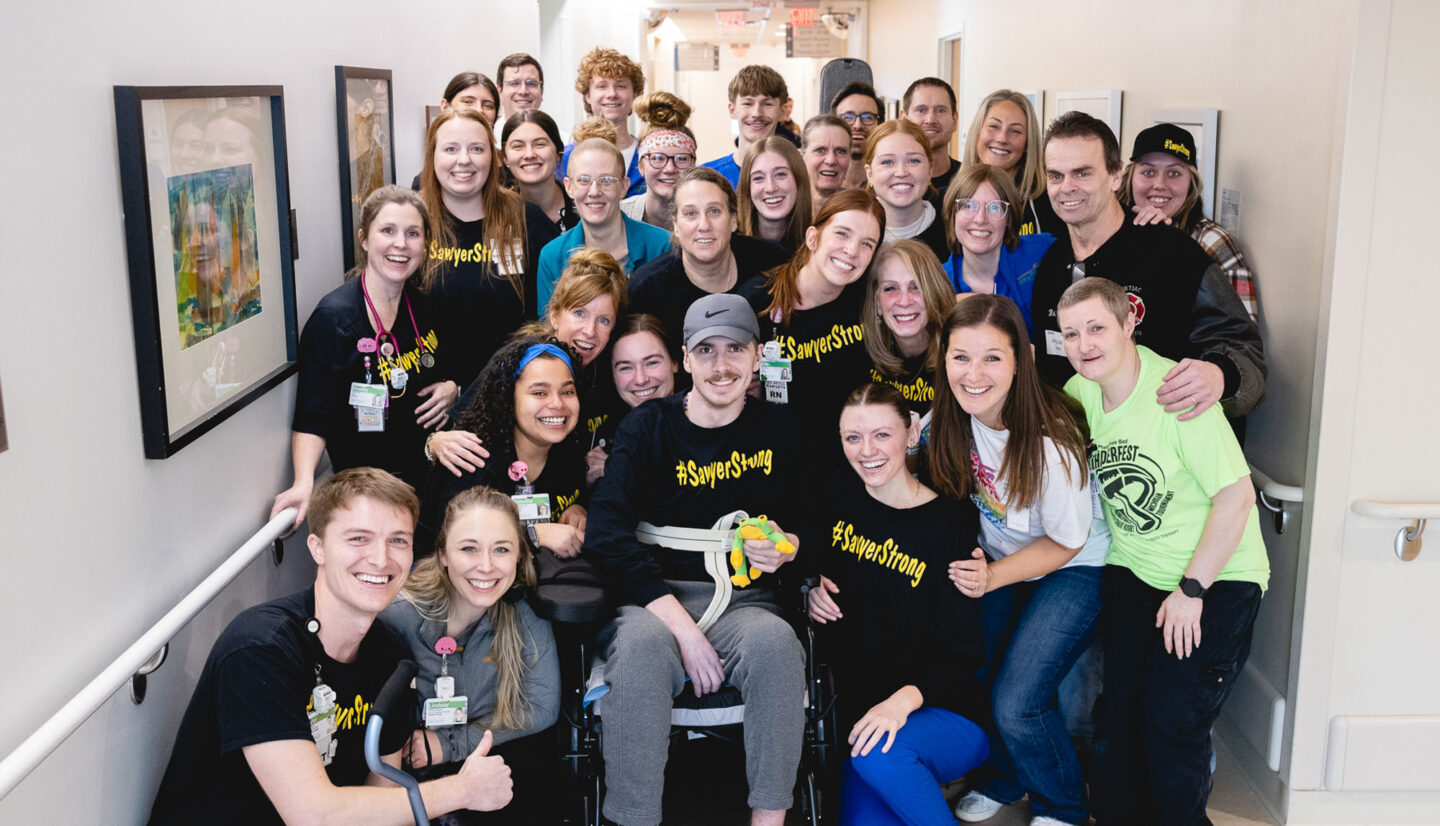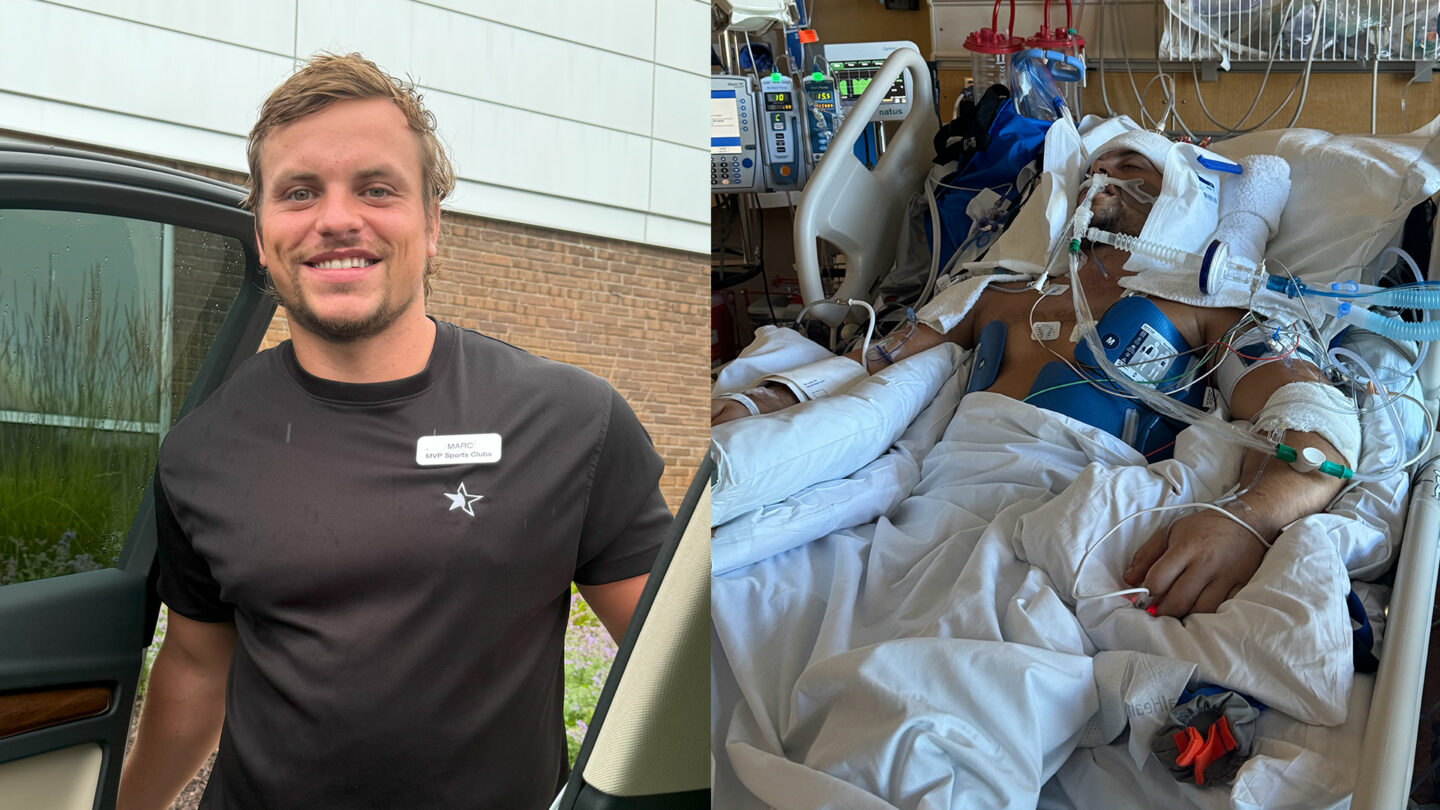Posted on May 17, 2017
Mary Free Bed stroke study aims to improve outcomes
Researchers and clinicians from Mary Free Bed Rehabilitation Hospital, Indiana University, and the Shirley Ryan AbilityLab, formerly the Rehabilitation Institute of Chicago, are collaborating to provide greater independence and mobility for people who are recovering from stroke.

A five-year, multi-center research study, funded by the National Institute on Disability, Independent Living, and Rehabilitation Research, is assessing whether high-intensity gait training improves walking function after stroke. The study, in its third year, so far has included 250 participants at Mary Free Bed.
Lead researchers George Hornby, PT, PhD and Jenni Moore, PT, DHS — internationally known for their work on the recovery of walking function after stroke — recently visited Mary Free Bed to provide training for physical therapists on the Inpatient Stroke Team. The study is entering a new phase of implementing high-intensity gait training intervention.
“The goal is to identify specific rehabilitation protocols to facilitate better, faster recovery,” said Roberta Virva, manager of Clinical Research in the Center for Research & Innovation. Other Mary Free Bed staff on the study team include Dr. John F. Butzer, principal investigator; Lauren Lenca, research physical therapist, and Ariel Lugo, research assistant.
It’s not just the study personnel who make the research possible, Virva said.
“It’s a team effort,” she said, crediting nursing staff, rehab techs, occupational, speech-language and physical therapists, and inpatient schedulers. “It takes everyone on the floor to make this work.”
Most patients in the Inpatient Stroke Program are eligible for high-intensity walking training. Patients admitted to the program engage in intense (working at 70-80 percent of heart rate capacity) and varied (sideways, backwards, around obstacles) walking practice four days a week and up to 60 minutes a session. Patients at a lower functional level may safely participate by using a treadmill/harness system or with extra support from an additional research assistant or rehab tech.
For patients who choose to participate in the study, data is collected from heart rate monitors, pedometers and a patient’s rate of perceived exertion. Researchers use three assessments of balance and walking to help measure outcomes of intense training: the Berg Balance Scale, a 10-meter walk test, and a six-minute walk test. Participants are monitored every week.
These measures also have been implemented as standard-of-care assessments for patients in the Inpatient Brain Injury, Day Rehab and Sub-acute Rehabilitation programs. This is separate from the study but part of an organization-wide initiative to standardize the measurement of patient outcomes and establish common metrics across the Mary Free Bed care continuum.
Dr. Benjamin Bruinsma, medical director of the Inpatient Stroke Program, and Steve Brodnicki, program director, also have been critical to the success of the study.
“We as a team are always looking at ways to improve our patient’s function and independence,” Bruinsma said.
Researchers hope to determine how to most effectively and consistently use high-intensity gait training to optimize post-stroke walking ability, walking speed, standing balance and walking endurance. Improved walking ability enables stroke survivors to reintegrate more easily into the community. For example, a person should be able to walk one meter per second to be able to safety function in the community, as this speed allows him or her to cross the street during a light cycle or keep pace on a busy sidewalk, etc.
The study also has impact beyond stroke rehabilitation, as it affirms Mary Free Bed’s dedication to research and using evidence-based practices in all areas of care. Virva said researchers and clinicians are focused on developing protocols to “put knowledge into action in the hospital” and she credits Moore and Hornby with their assistance in this aspect.
Virva, Hornby and Moore presented preliminary study findings at the American Congress of Rehabilitation Medicine in November 2016. The study team plans to share final data in research publications, at conferences, and in other academic and clinical settings. Already, Hornby and Moore have developed an online training course for high-intensity gait training. Mary Free Bed therapists have demonstrated strong interest in the training and can receive it at no charge through the Shirley Ryan AbilityLab. Physical therapists receive continuing education credits for completing the online course.
“It’s been an incredible opportunity for Mary Free Bed and they have been tremendous assets in training us how to turn evidence-based knowledge into practice and fulfill our research mission of leading in rehabilitation outcome research,” Virva said.





